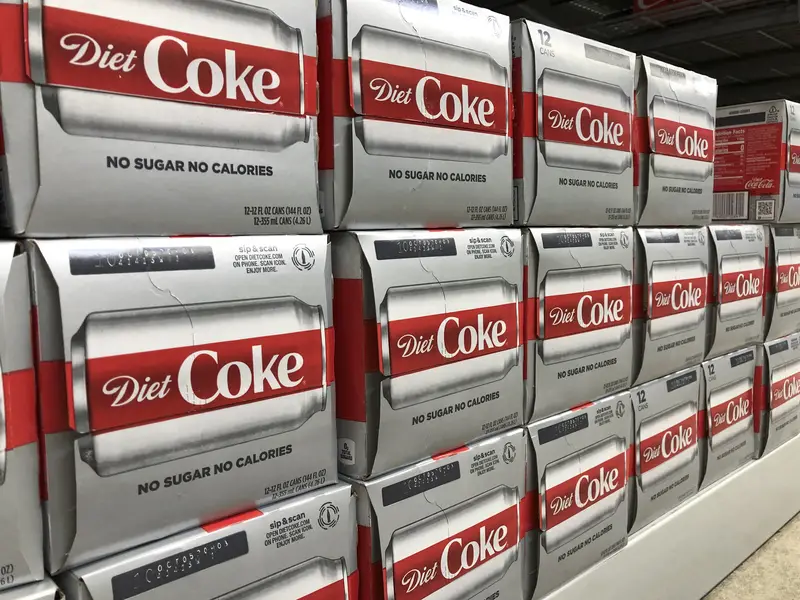Ever wondered who came up with the idea of diet soda? Most people assume it was one of the big players like Coca-Cola or Pepsi. But the real story is much more surprising and actually pretty touching. Back in 1952, a small family-owned company in Brooklyn changed the soda game forever when they created the world’s first sugar-free soda. And they didn’t do it to make millions or compete with the giants – they did it to help sick people. Let’s look at how a humble family business started a revolution that would change what we drink forever.
A father and son team created the first diet soda in Brooklyn
In 1952, when most Americans were guzzling sugary sodas without a second thought, Hyman Kirsch and his son Morris were thinking about people who couldn’t enjoy these sweet treats. The pair owned the Kirsch Bottling Company in Brooklyn, New York. Unlike the big soda makers with their massive factories and nationwide distribution, the Kirsch family ran a modest local operation. They weren’t industry titans with marketing teams and research labs – just a father and son who saw a need and decided to fill it.
What set the Kirsch family apart was their connection to the community. Their bottling plant was located near the Jewish Sanitarium for Chronic Disease, and they became aware that many patients there had diabetes and couldn’t drink regular sodas because of the high sugar content. Instead of just feeling bad about it, they decided to do something. They created a sugar-free soda called “No-Cal” that these patients could safely enjoy. Their first flavor was ginger ale, but they quickly expanded to root beer, cola, and black cherry.
They made No-Cal for patients with diabetes, not dieters
What makes the story of No-Cal so interesting is that weight loss wasn’t even on the Kirsch family’s radar when they invented it. This wasn’t about helping people fit into swimsuits or drop a few pounds before a high school reunion. The Kirsches were genuinely concerned about diabetic patients who had to watch their sugar intake. They wanted to create something that would let these folks enjoy a sweet treat without putting their health at risk. It was a simple act of kindness that ended up changing the entire beverage industry.
This focus on helping diabetics rather than dieters explains why they called their product “No-Cal” (for no calories) rather than “Diet Something.” The name highlighted what was important – that the drink didn’t contain the sugar and calories that could be harmful to people with certain health conditions. They used an artificial sweetener called cyclamate to give the soda its sweetness without adding sugar. While we now have many artificial sweeteners to choose from, back then the options were much more limited.
No-Cal quickly became a huge hit with unexpected customers
The Kirsch family got a big surprise after launching No-Cal – it wasn’t just diabetics who wanted sugar-free soda. Weight-conscious consumers, especially women who were watching their figures, flocked to the product. In the 1950s, as awareness about weight and dieting grew, No-Cal found itself with a much bigger market than expected. The timing was perfect. Americans were becoming more concerned about their waistlines, and here was a product that let them enjoy a sweet drink without the guilt of extra calories. Who could resist?
The numbers tell the story of just how big this unexpected success was. By 1953, just one year after launching their sugar-free ginger ale, the Kirsch Bottling Company was making a whopping $5 million a year from diet soda sales. That’s around $55 million in today’s money – not bad for a small family business! The product that was created to help sick people had turned into a major commercial success. Women especially embraced No-Cal as a way to satisfy sweet cravings without adding inches to their waistlines. The Kirsches had stumbled upon a gold mine.
The big soda companies soon noticed and wanted in
The major soda companies weren’t about to let a small Brooklyn bottler have the diet soda market all to themselves. Once they saw how popular No-Cal had become, they quickly started working on their own sugar-free offerings. Royal Crown Cola was the first big company to jump in, launching Diet Rite Cola in 1958. This was a significant step because Diet Rite became the first diet soda to be distributed nationally, taking the concept from a local Brooklyn phenomenon to a product available across America.
Other giants soon followed suit. Dr. Pepper created a dietetic version of their popular drink. Coca-Cola launched Tab in the early 1960s, carefully avoiding using the Coca-Cola name on the diet product initially because they weren’t sure if it would succeed or fail. Pepsi introduced Patio Diet Cola, which they later renamed Diet Pepsi when they grew more confident in the category. The diet soda war had begun, and the big corporations had the marketing budgets and distribution networks to take the concept mainstream. The diet soda market was about to explode.
The sweetener drama that shook the diet soda world
Just as diet sodas were gaining popularity, disaster struck. In 1969, the FDA banned cyclamate, the main sweetener used in many diet sodas, after studies linked it to cancer in laboratory rats. This could have been a death blow to the entire diet soda industry. Companies had to scramble to reformulate their products or risk losing everything. Many switched to saccharin, another artificial sweetener, but it had a bitter aftertaste that many consumers disliked. The diet soda market took a hit as people questioned whether these products were safe.
The turning point came in 1982 with the introduction of aspartame, marketed under the brand name NutraSweet. This new sweetener tasted much more like sugar and didn’t have the unpleasant aftertaste of saccharin. Coca-Cola capitalized on this by launching Diet Coke, which quickly became a massive hit. Unlike Tab, they weren’t afraid to put the Coca-Cola name on this product. They knew they had a winner. The improved taste of aspartame-sweetened diet sodas helped the category recover and grow even bigger than before. Today, manufacturers use a variety of sweeteners including sucralose, acesulfame potassium, and stevia to create diet drinks.
What happened to No-Cal, the pioneer of diet sodas?
Despite being the first to market and initially successful, No-Cal couldn’t compete with the marketing power and distribution networks of the soda giants. The Kirsch Bottling Company managed to survive the cyclamate ban in 1969 by reformulating their products, but they gradually lost market share to the bigger companies. The little family business that started the diet soda revolution simply couldn’t keep up with the resources that companies like Coca-Cola and Pepsi could pour into their diet brands.
By the 1980s, the Kirsch Bottling Company was sold and consolidated into larger beverage companies. The No-Cal brand faded away and is no longer produced today. It’s a bittersweet end for the pioneer of diet sodas. While Hyman and Morris Kirsch may not have built a lasting empire, their legacy lives on in every can of diet soda sold around the world. Their innovative idea to create a sugar-free soda for diabetic patients ended up changing the beverage industry forever and creating an entirely new category of drinks that now makes up more than 25% of all soda sales in the United States.
Diet sodas became more about weight than health
As diet sodas evolved from No-Cal to modern brands, their marketing shifted dramatically. While the Kirsch family created their product for health reasons – specifically to help diabetics – the big soda companies quickly realized that weight control was a much bigger market. By the 1960s and 70s, advertisements for diet sodas rarely mentioned diabetes at all. Instead, they featured slim models and focused heavily on staying thin and attractive. The message was clear: drink this, and you too can be beautiful and fit.
This shift reflected broader societal changes. As Americans became more weight-conscious, diet products of all kinds gained popularity. Diet sodas were no longer seen as special products for people with medical conditions but as everyday choices for anyone watching their weight. Campaigns like “Just one calorie, not even that” for Tab or “The taste you’ve been waiting for” for Diet Pepsi emphasized taste and low calories rather than health benefits. By the 1980s, when Diet Coke was launched, the focus was almost entirely on weight control and lifestyle rather than medical needs. The Diet Coke phenomenon cemented diet sodas as mainstream products for the masses.
From humble beginnings to a billion-dollar industry
It’s amazing to think that what started as a kind gesture for diabetic patients has grown into a massive global industry. Today, diet sodas make up more than a quarter of all soda sales in the United States, with Diet Coke alone generating billions in revenue each year. The category has expanded far beyond the original No-Cal ginger ale to include hundreds of different brands and flavors. Every major beverage company now offers multiple diet or zero-sugar options, and new variations continue to appear on store shelves regularly.
The evolution continues as consumer preferences change. In recent years, many companies have moved away from the word “diet” on their packaging, preferring terms like “zero” or “free” instead. Coca-Cola Zero Sugar and Pepsi Zero Sugar reflect this trend, as the word “diet” has fallen out of favor with some consumers. New sweeteners like stevia have been introduced to appeal to those looking for more “natural” options. The industry that Hyman and Morris Kirsch started with their small Brooklyn bottling company continues to adapt and change, but the basic concept they pioneered – sweet drinks without sugar or calories – remains at its core.
So the next time you crack open a can of your favorite diet soda, remember that you’re enjoying the legacy of a father and son who just wanted to help sick people enjoy a simple pleasure. Their small act of kindness changed what we drink forever, creating an entire industry that none of us could imagine living without today. Not bad for a little family business from Brooklyn!

